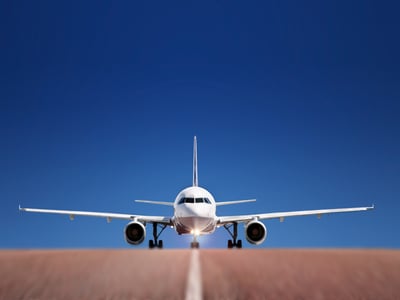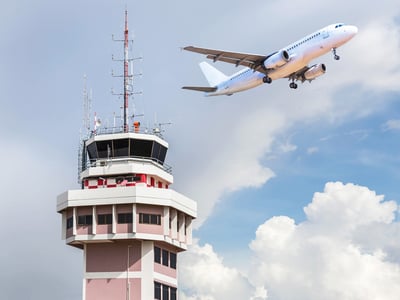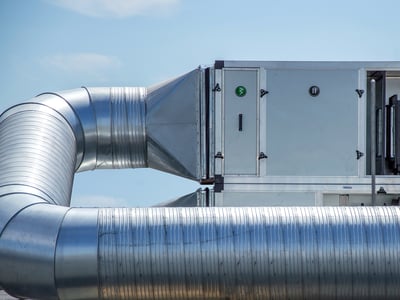Don’t let bad indoor air quality travel with you. Safeguard travellers and employees from hazardous substances and supply clean, filtered air to terminals and other areas both indoors and outdoors.
Every day, millions of people travel through airport terminals – and take uninvited guests with them. As they rush to catch their flights or claim baggage, their clothing, their luggage and their skin can shed particles that contribute to air pollution.
Other sources that also degrade air quality include the operation of pushback trucks, passenger buses, staff buses, baggage wagons, cleaning team vehicles and catering trucks. Most of these vehicles are powered by diesel engines and operate close to gates. As a result, they likely contribute to much of the pollution inside the terminals. Jet engine exhaust brings not only unpleasant odours, but dangerous unburned hydrocarbons. Volatile organic compounds (VOCs) are produced as a result of construction, painting and other maintenance activities.
High-quality airport air filtration solutions from Camfil help you control particulate and molecular pollutants. This way, you can provide fresh air for airport workers and travellers alike and help to limit the spread of problems ranging from the common cold to communicable diseases. You can even prevent the degradation of your facility.
Our products comply with strict environmental standards such as EN 16798-3 and ISO 16890.
Typical Camfil air filtration systems for airport pollution include:
ePM1 particulate air filters in central station HVAC systems or rooftop air handling systems provide the greatest level of fine-particle contaminant protection and operational economy. Fine particles can penetrate deeply into the lungs and cause damage. The ePM1 filter offers the best balance points for operational efficiency, a low resistance to airflow, long filter life and efficient use of energy to meet your sustainability goals.
Carbon air filtration systems address the problems of jet fumes, diesel fumes and odours associated with other airport equipment, as well as VOCs and rest room exhaust. Carbon filters are also sustainable: when they are removed they can be regenerated and reused.

Gas turbine generation provides efficient electricity and process heat to vital industries like airports. Camfil's EPA air filters are designed to protect turbines against fine particulates from airplane exhaust, for maximum availability and reliability.

Help protect air traffic controllers and airport employees from jet engine emissions. Direct and secondary emissions include combustion particles and molecular contaminants such as nitrogen oxides (NOx), hydrocarbons & PAH, aldehydes, ozone and sulphur oxides.

Protect people, processes, products and equipment while keeping maintenance and energy costs low by keeping air handling units unclogged.

Customers want to eat at restaurants that control food safety and dining area cleanliness. Eliminate food preparation odours and particulates, and decrease the possibility of airborne food contamination and fire hazards from airborne oil vapors.

CamCarb XG Engineered for energy and maintenance cost savings in molecular contamination control applications
Food and beverage Electronics and optics Commercial and public buildings
The first classification system for molecular filters in general ventilation applications
Commercial and public buildings Standard and regulationsOften the initial purchase price for air filters or dust collectors is just the tip of the iceberg. The true costs for energy, maintenance and disposal are lurking below the surface. To make the most economic decision in the long-run, a detailed calculation considering all the factors will help to reduce your overall expenditure.
To answer this question, let's look at the difference between a land based gas turbine and a jet engine.
For the past 10 years Camfil have supported Clean Air in London's mission to achieve full compliance with World Health Organisation air quality guidelines throughout London and elsewhere
Although there are engineering standards that recommend levels of air filtration for airplanes, there is no federal requirement for airplanes to install air filters. Cabins may not be filtered or cleaned in any way.